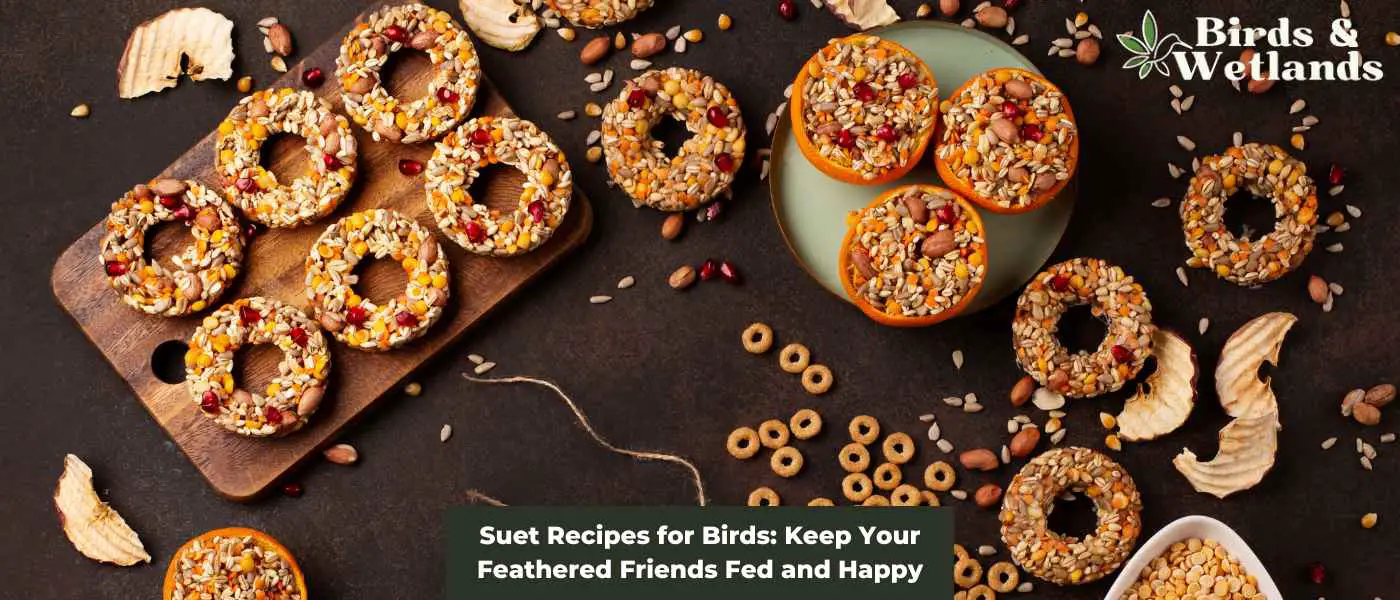If you’re reading this, chances are you love birds and you’re interested in providing the best possible care for your feathered friends. One of the simplest ways to do so is by making your own suet bird feed. Not only is it an inexpensive way to ensure your backyard birds are well-fed, but it’s also a fun activity that you can enjoy with your family and friends.
In this post, we’ll be sharing an easy suet recipe for birds that you can make right at home. So grab a pen, take some notes, and get ready to keep your feathered friends fed and happy!
Key Takeaways On Suet For Birds
Things to Consider
- Fat Source: Traditionally, suet is made from beef fat, particularly the hard fat around the kidneys and loins. However, lard (pig fat) can also be used and is often easier to find. Avoid fats from cooked or seasoned meat, as they can contain ingredients harmful to birds.
- Add-ins: Feel free to experiment with different add-ins. Black oil sunflower seeds, millet, dried insects, or chopped nuts can all be good choices.
- No-Melt Suet: Traditional suet can melt if the temperature gets too high. If you live in a warmer climate or want to feed suet in the summer, consider making a no-melt suet recipe that includes flour or cornmeal to help it hold its shape.
- Feeder Type: Suet is typically fed in a cage-like feeder that allows birds to cling while they feed. Ensure the suet pieces fit your feeder. If you don’t have a suet feeder, you can also smear suet into the bark of a tree.
- Storage: Homemade suet can be stored in the freezer until ready to use.
What are suet cakes?
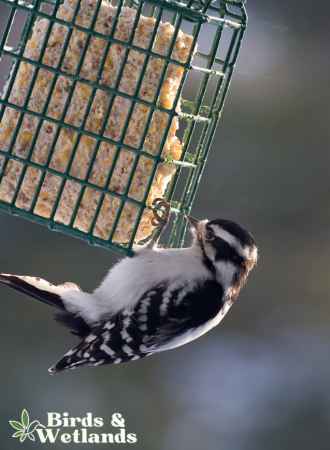
Suet cakes are small, dense blocks of fatty food made from animal fat and other ingredients, typically used as a high-energy food source for wild birds such as woodpeckers, chickadees, nuthatches, and titmice. They are usually sold in the shape of a cake or block and can be hung from a tree or placed in a suet feeder.
The primary ingredient in a suet cake is suet, which is the hard fat that surrounds the kidneys of cows and sheep. This fat is high in calories and provides a good source of energy for many birds, particularly during the colder months when other food sources may be scarce.
Suet may contain other ingredients, such as seeds, nuts, fruits, and grains, depending on the specific recipe. Some suet may also include added vitamins and minerals to provide additional nutritional benefits for birds.
Wild Bird Copper Suet Feeder
A Must-Have for Bird Lovers
- Triple Capacity: Hold up to 3 cakes or a large brick for continuous bird feeding.
- User-Friendly: The EZ Fill design ensures effortless reloading of bird feed.
- Weather-Proof: Its unique roof design keeps feed dry, ensuring birds can feast in any weather.
- Comfort-First Design: The vinyl coating prevents birds’ feet from freezing in winter or burning in summer.
Simple homemade bird suet recipe
Here’s a simple homemade suet recipe you can make at home:
Ingredients:
- 1 cup of animal fat (such as lard or bacon grease)
- 1 cup shortening (use palm oil free options)
- 1 cup of birdseed
- Optional: dried fruit or nuts
Instructions:
- Melt the animal fat in a pan or large pot on low heat.
- Add the birdseed to the rendered fat and stir the remaining ingredients to a separate bowl until it’s well mixed.
- If you want, you can also add some dried fruit or nuts to the melted mixture.
- Spoon mixture into a mold or container such as an ice cube tray.
- Let the suet mixture cool and solidify in the refrigerator for a few hours.
- Once the suet has hardened, remove it from the mold or container and cut it into small pieces.
- Place the suet in a suet feeder or caged suet holder or wrap it in a mesh bag and hang it in a tree for the birds to enjoy.
That’s it! Your homemade bird suet is ready to go. Remember to store any unused suet in the refrigerator or freezer to keep it fresh.
No Melt Suet
The term “no-melt” in suet recipes refers to the end product’s resilience in warmer temperatures, rather than the process of making the suet itself. The lard and peanut butter are indeed melted during the cooking process to allow for even blending of the ingredients. The inclusion of dry ingredients such as flour and cornmeal helps to create a final product that is less likely to melt once it has set, even in higher temperatures.
This does not mean that the suet won’t melt at all, especially in very hot climates, but it should be more resilient than traditional suet recipes. If you notice that your suet is melting too quickly, try placing your feeder in a shaded area or bring the feeder indoors during the hottest part of the day.
No-Melt Suet Recipe
Ingredients:
- 1 cup lard or beef fat
- 1 cup peanut butter
- 2 cups quick oats
- 2 cups cornmeal
- 1 cup flour
- 1/3 cup sugar
Instructions:
- Melt the lard and peanut butter over low heat until well combined.
- Stir in the remaining ingredients and mix well.
- Pour the mixture into molds or containers and let it harden.
- The suet can then be placed in a suet feeder.
tips To offer birds homemade suet cakes as winter food
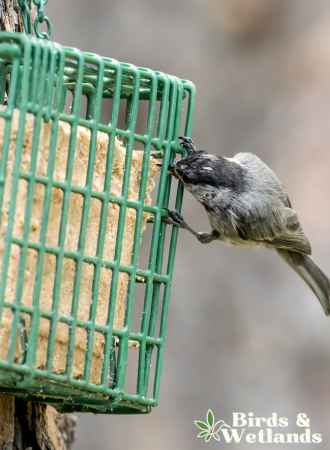
- Use the Right Feeder: Suet cakes are typically offered in suet cage feeders, which are designed to hold the cake while allowing birds to peck at it through the mesh. These feeders are usually made from coated wire and can be hung from a branch, shepherd’s hook, or other structures.
- Location: Choose a quiet and safe location to hang your feeder. Ideally, it should be near some cover, such as trees or shrubs, which can provide the birds with a quick refuge from predators. However, it should not be so concealed that you can’t monitor it for cleanliness and refill needs.
- Monitor the Temperature: Suet can go rancid if left out in warm temperatures for too long. In milder climates, consider only putting out enough suet that can be eaten within a day or two. In colder climates, the suet should last longer without going bad.
- Keep It Clean: As with all bird feeders, cleanliness is essential to prevent disease. Regularly clean the suet feeder with a solution of one part bleach to nine parts water. Rinse thoroughly and allow to dry completely before refilling.
- Offer a Variety: Although suet cakes are a great source of energy, they should be part of a balanced diet for your feathered visitors. Be sure to provide a variety of foods, including seeds, fresh water, and possibly mealworms or other bird-friendly snacks.
- Store Properly: Any uneaten suet cakes should be stored in a cool place, such as a refrigerator or freezer, to keep them fresh.
- Be Consistent: Once birds find your feeder, they’ll come to rely on it as a food source. Try to keep the feeder stocked consistently, especially during winter months when food can be scarce.
- Save pork fat or bacon drippings for making inexpensive suet later. You can also buy beef fat trimmings from our local butcher.
- Other dry ingredients you can add to your beef suet include sunflower seeds, thick oatmeal, corn meal, dried fruits and other bird seed mixes.
- Store extra suet separated by wax paper and sealed in plastic wrap in the freezer until its ready to use.
- You can spread your suet on tree limbs or branches but this can leave unsuspecting birds vulnerable to attacks from predators.
- Put suet in bird feeders that are squirrel proof and away from nearby trees that provide jumping off points for these pesky members of the rodent family.
Related Questions on How to Feed Birds Suet
Can you use Crisco to make bird suet cake recipe?
Yes, you can use Crisco to make bird suet cakes. Crisco is a brand of vegetable shortening that is often used as a substitute for animal fats in bird suet recipes.
To make bird suet cakes with Crisco, simply melt the Crisco in a pan over low heat, mix in birdseed, nuts, and any other desired ingredients, and pour the mixture into a mold to cool and solidify. Once the suet cake is firm, you can hang it outside for the birds to enjoy.
Can you add peanut butter mixture to suet recipe?
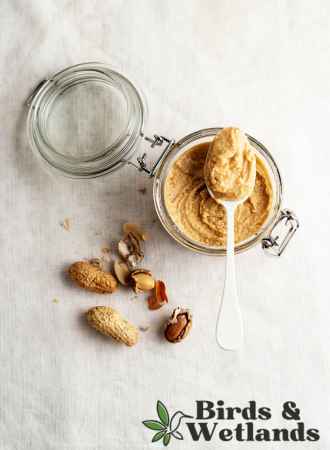
Yes, you can add peanut butter to suet to make a nutritious treat for birds. Peanut butter is a common ingredient in bird suet recipes, as it is high in fat and protein, which are essential nutrients for many wild bird species.
To make a peanut butter suet cake, simply combine the shortening and nut butter in a large bowl and stir well until completely combined. Pour the mixture to a plastic container and freeze for about one to two hours before putting it into your suet feeders.
It’s important to note that not all birds can eat peanut butter, so it’s a good idea to research which bird species frequent your area and what types of food are safe and appropriate for them. You should avoid using peanut butter that contains added sugars or other additives, as these can be harmful to birds.
What is the best feeder for suet?
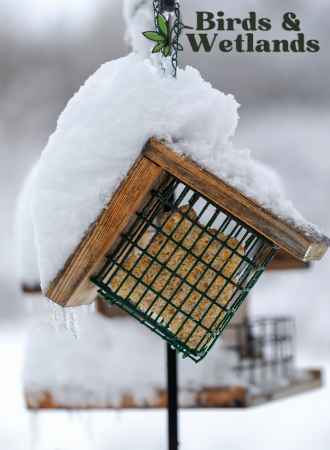
The best feeder for suet cakes for birds is one that is sturdy, easy to clean, and provides protection against squirrels and other animals that may try to steal the suet.
A popular type of feeder for suet cakes is a metal cage feeder, which features a wire cage that holds the suet cake and allows birds to feed through the openings. These feeders are easy to clean and can be hung from a tree or pole, but it’s important to choose a size that is appropriate for the suet cake you are using.
Another option is a suet log feeder, which is a wooden feeder that holds multiple suet cakes and provides a larger feeding surface for birds. Some suet log feeders also have a metal mesh screen to keep squirrels and other animals out.
When is the best time to feed birds suet?
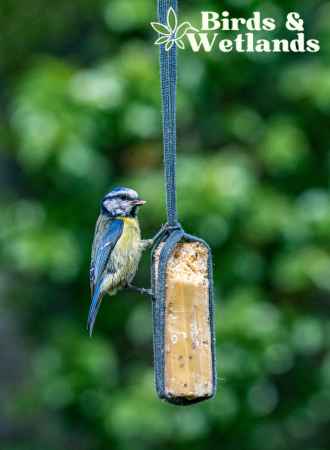
Making suet is a wonderful way to help your little feathered friends survive cold weather, so the best time to feed birds suet is during the fall and winter months. When natural food sources are scarce, birds need extra energy to survive.
Suet is a high-fat food that provides birds with the calories they need to maintain their body temperature and keep themselves warm. While suet can be offered to birds year-round, it is most beneficial during the colder months when birds require more energy to survive.
It’s also a good idea to feed suet early in the morning or late in the afternoon when birds are most active and looking for food. Avoid feeding suet during the hottest part of the day, as it can melt and become rancid, harming birds.
When should I replace my suet?
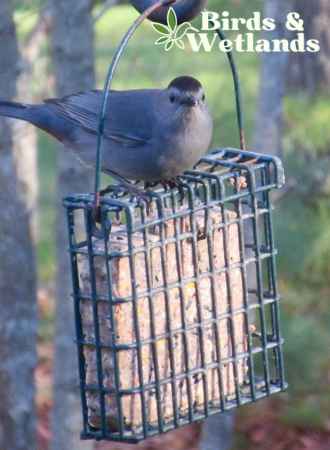
You should replace your suet when it becomes rancid or moldy or has been hanging in your feeder for an extended period. Suet can go bad and become unsafe for birds to consume, so monitoring your feeder regularly and checking the suet for signs of spoilage is essential.
If the suet has been in your feeder for more than a week or two, it’s a good idea to replace it, even if it appears to be okay. Over time, suet can become contaminated with bacteria or other pathogens that can cause illness in birds. To keep your suet fresh and safe for birds, store it in a cool, dry place, and avoid buying more than you can use in a few weeks.
By replacing your suet regularly, you can enjoy watching your feathered friends in your garden or yard.
What types of birds eat suet?
Hungry birds love suet but not all of them like to eat it. The most common birds that eat suet include jays, starlings, titmice, wrens, woodpeckers, chickadees, nuthatches and other insect-eating birds.

